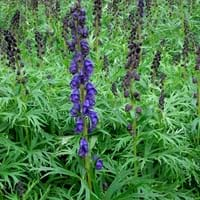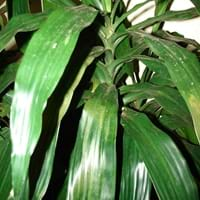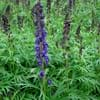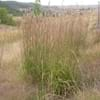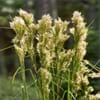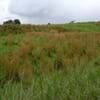Life Span
Perennial
Annual
Type
Flowering Plants, Perennial
Tender Perennial
Origin
Not Available
Africa
Types
Yellow Monkshood, Carmichael's Monkshood, Kamchatka Aconite
Not Available
Habitat
low mountains
tropical environments, Well Drained
USDA Hardiness Zone
4-8
10-15
AHS Heat Zone
Not Available
12-1
Sunset Zone
Not Available
H2, 21, 23, 24
Habit
Upright/Erect
Upright/Erect
Flower Color
Blue, Violet
White
Flower Color Modifier
Not Available
Bicolor
Fruit Color
Non Fruiting Plant
Orange
Leaf Color in Spring
Green
Dark Green
Leaf Color in Summer
Green
Dark Green
Leaf Color in Fall
Green
Dark Green
Leaf Color in Winter
Green
Light Green
Leaf Shape
Upright
Linear
Plant Season
Fall, Summer
Spring, Summer, Fall, Winter
Sunlight
Full Sun, Partial shade
Full Sun, Partial Sun, Partial shade
Growth Rate
Medium
Medium
Type of Soil
Moist
Loam, Sand
The pH of Soil
Not Available
Acidic, Neutral
Soil Drainage
Well drained
Well drained
Bloom Time
Early Fall, Late Summer
Late Summer, Early Fall, Fall, Late Fall
Tolerances
Not Available
Drought
Where to Plant?
Ground
Container, Ground, Pot
How to Plant?
Divison
Rooted stem cutting, Stem Cutting
Plant Maintenance
Medium
Medium
Watering Requirements
Do Not over Water, Requires regular watering
Do Not over Water, Water Deeply, Water in morning to avoid prompting diseases, Water in the early morning hours
In Summer
Lots of watering
Lots of watering
In Spring
Moderate
Moderate
In Winter
Average Water
Average Water
Soil pH
Neutral
Acidic, Neutral
Soil Type
Average, Moist
Loam, Sand
Soil Drainage Capacity
Well drained
Well drained
Sun Exposure
Partial Sun
Full Sun, Partial Sun, Partial shade
Pruning
Remove damaged leaves
Cut or pinch the stems, Remove damaged leaves, Remove dead branches, Remove dead leaves, Remove deadheads
Fertilizers
All-Purpose Liquid Fertilizer
All-Purpose Liquid Fertilizer, Apply N-P-K, fertilize in growing season
Pests and Diseases
Citrus leaf miner, Leaf spot, Mealy bugs, Mites, Rust, Verticillium Wilt
Insects, Leaf spot, Mealybugs, Mites, Red blotch, Root rot
Plant Tolerance
Drought
Drought, Humidity, Shade areas
Flowers
Yes
Insignificant
Flower Petal Number
Not Available
Single
Foliage Texture
Bold
Coarse
Foliage Sheen
Matte
Glossy
Attracts
Bees
Mealybugs, Mites
Allergy
breathing problems, Nausea, Rapid Heartbeat, Sweating, Vomiting, weakness
Not Available
Aesthetic Uses
Showy Purposes
Beautification, Showy Purposes
Beauty Benefits
Not Available
Not Available
Environmental Uses
Not Available
Air purification
Medicinal Uses
Gout, Heart problems, Inflammation, Joint pain, Kidney problems, Nerve pain, Wounds
Not Available
Part of Plant Used
Whole plant
Not Available
Other Uses
Used in herbal medicines
Not Available
Used As Indoor Plant
No
Yes
Used As Outdoor Plant
Yes
Yes
Garden Design
Cutflower, Mixed Border
Container, Feature Plant, Foundation, Houseplant, Tropical
Botanical Name
Aconitum variegatum
DRACAENA fragrans 'Janet Craig'
Common Name
Aconite, Monkshood, Wolf's bane, Leopard's bane, Mousebane, Women's bane, Devil's helmet, Queen of all Poisons, or Blue rocket
Corn Plant, Janet Craig Dracaena
In Hindi
बच्छनाभ
Janet Craig Dracaena
In German
Eisenhut
Janet Craig Dracaena
In French
aconit
Janet Craig Dracaena
In Spanish
acónito
Janet Craig Dracaena
In Greek
monkshood
Janet Craig Dracaena
In Portuguese
Aconitum
Janet Craig Dracaena
In Polish
tojad
Janet Craig Dracena
In Latin
aconitum
Johann Peter Dracaena
Phylum
Magnoliophyta
Tracheophyta
Class
Magnoliopsida
Magnoliopsida
Order
Ranunculales
Asparagales
Family
Ranunculaceae
Agavaceae
Clade
Angiosperms, Eudicots
Angiosperms, Monocots
Tribe
Delphinieae
Not Available
Subfamily
Not Available
Not Available
Number of Species
Not Available
Difference Between Aconitum and Janet Craig Dracaena
If you are confused whether Aconitum or Janet Craig Dracaena are same, here are some features about those plants to help you choose better. Many people think that these two plants have the same characteristics, but one can see Aconitum and Janet Craig Dracaena Information and learn more about it. Fertilizers required for proper growth of Aconitum are All-Purpose Liquid Fertilizer, whereas for Janet Craig Dracaena fertilizers required are All-Purpose Liquid Fertilizer, Apply N-P-K and fertilize in growing season. Hence, one should know the basic difference between Aconitum and Janet Craig Dracaena if you are planning to have them in your garden to enhance its beauty.
<
Flowering PlantsImportance of Aconitum and Janet Craig Dracaena
Want to have the most appropriate plant for your garden? You might want to know the importance of Aconitum and Janet Craig Dracaena. Basically, these two plants vary in many aspects. Compare Aconitum and Janet Craig Dracaena as they differ in many characteristics such as their life, care, benefits, facts, etc. Every gardener must at least have the slightest clue about the plants he wants to plant in his garden. Compare their benefits, which differ in many ways like facts and uses. The medicinal use of Aconitum is Gout, Heart problems, Inflammation, Joint pain, Kidney problems, Nerve pain and Wounds whereas of Janet Craig Dracaena is Not Available. Aconitum has beauty benefits as follows: Not Available while Janet Craig Dracaena has beauty benefits as follows: Not Available.
Compare Facts of Aconitum vs Janet Craig Dracaena
How to choose the best garden plant for your garden depending upon its facts? Here garden plant comparison will help you to solve this query. Compare the facts of Aconitum vs Janet Craig Dracaena and know which one to choose. As garden plants have benefits and other uses, allergy is also a major drawback of plants for some people. Allergic reactions of Aconitum are breathing problems, Nausea, Rapid Heartbeat, Sweating, Vomiting and weakness whereas of Janet Craig Dracaena have Not Available respectively. Having a fruit bearing plant in your garden can be a plus point of your garden. Aconitum has no showy fruits and Janet Craig Dracaena has no showy fruits. Also Aconitum is flowering and Janet Craig Dracaena is not flowering . You can compare Aconitum and Janet Craig Dracaena facts and facts of other plants too.
